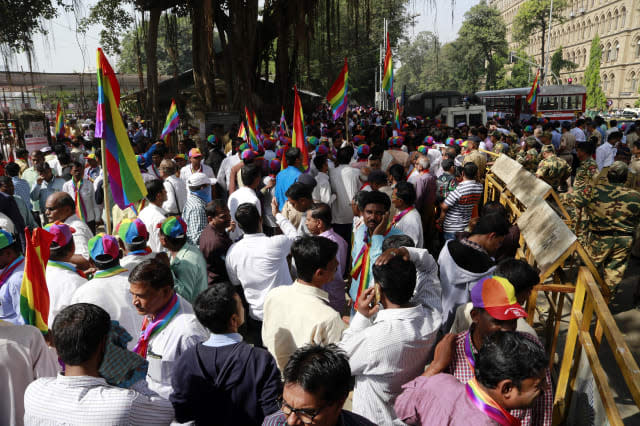India's bold experiment with money

In a bid to crush the black economy and raise tax revenues, India's government abolished money – or at least certain circulating notes. The result? A disaster, says Simon Wilson.
What has happened?
India's cash-dependent economy is struggling to cope with the shock of a well-intentioned but poorly executed effort to tackle corruption, tax evasion and the vast black economy. On 8 November Prime Minister Narendra Modi suddenly announced, live on television, that as of midnight that night, the country's two highest-denomination notes, the 500-rupee and 1,000-rupee notes, would no longer be legal tender.
However, the notes would not turn into worthless pieces of paper at the stroke of midnight. Indians had a grace period of until 30 December to deposit them in bank accounts or convert them into redesigned R500 or brand-new R2,000 notes. But they also announced strict limits on the exchange of physical bills into new notes, and people depositing the old notes had to produce identification.
What's the rationale?
It's the most dramatic instance to date of a government listening to prominent economists (such as Kenneth Rogoff and Larry Summers) who advocate the scrapping of high-denomination notes (or even all cash) to make illegal transactions harder. In May the European Central Bank announced that it would phase out the €500 note by 2018 because it helps facilitate crime; the note is reportedly nicknamed the "Bin Laden" by the criminal fraternity. And in some European countries, notably Sweden, Norway and Denmark, physical cash is on the verge of extinction.
However, India's actions have been extreme by any standards ("by far the most sweeping change in currency policy that has occurred anywhere in the world in decades", according to Summers) and some would say recklessly self-harming.
Why's that?
Cash accounts for almost all consumer transactions in the country (98%) and the notes in question are not actually that big. Five hundred rupees is a bit less than £6, and R1,000 is a bit less than £12. Together the notes account for 86% of the notes in circulation by value.
So the government's shock announcement meant that almost all paper cash of significant value in India has to be exchanged or deposited within weeks – for a scheme that will create an even bigger note (the R2,000) anyway. Predictably, perhaps, the result has been chaos and paralysis – made worse by the rapid realisation that the government had not remotely adequately prepared.
What kind of chaos?
Vast queues at banks, and a cash economy that has ground to a halt without cash – causing widespread anxiety and hardship for the hundreds of millions of Indians who have no access to debit or credit cards to pay for essential goods. An estimated 80% of wage earners in India are paid in cash; tens of thousands of villages and towns have no banking facilities, and the "informal" cash economy accounts for anything from 25% to 75% of the country's GDP, according to varying estimates.
Moreover, Modi picked a particularly bad time to spring his surprise: the season when farmers (half the population) are ending the harvest and planting new seeds. Many have been left stranded without money to buy seeds and fertilisers. It is also peak wedding season, when demand for cash is greatest. For some, the cash crunch has proved fatal.
People have died?
To date, at least 16 people are reported to have collapsed and died in the vast queues that have formed outside banks and cash machines. In addition, there have been many reported deaths because people couldn't pay for medical treatment with redundant currency.
In one particularly distressing case, a newborn girl died in Mumbai last weekend when a hospital refused to accept her parents' discontinued notes and they couldn't change them in time for her to be treated. In fact, some vital services, including hospitals and funeral parlours, have been given exceptional permission to accept the old currency, but that message has been lost in the general confusion.
Will it be effective in the long run?
Estimates vary widely. According to Mihir Sharma on BloombergView.com, the optimists (wrongly) think that a vast amount of dodgy cash will go out of circulation. Yet only a small fraction of black money tends to be held as cash. Moreover, there were rumours of the so-called "demonetisation" reportedly circulating before Modi's announcement, possibly giving the really wealthy and well-connected enough time to dump their cash piles (see below).
And even in the best scenario that a big chunk of the outstanding currency is destroyed by crooks, there's no reason, argues Sharma, "to suppose that it was all black money and not the savings of regular citizens scared of harassment by the tax authorities".
In any event, the long-term effects of this monetary shock on India's informal economy (including the informal financial sector, which provides an estimated 40% of total bank lending) are likely to be grave. And the damage to the Modi government's reputation for efficiency could well be permanent.
Who are the winners?
Sales of luxury goods – such as Rolex watches – surged as wealthy Indians rushed to make purchases with piles of unaccounted cash ahead of the deadline. Jewellers reported a mini gold rush, as people lined up to buy gold at up to 52,000 rupees per ten grams – double the prevailing market price. The cash crunch has also been a boon for the electronics payment industry.
Mobikwik, a mobile wallet system, has seen an exponential surge in business, as has a rival provider, Paytm. India's tax authorities will also benefit from their enhanced powers of scrutiny. And it is this last factor that could prove the biggest net plus in a country where only 1% of citizens pay income tax, and where government revenues amount to a puny 20% of GDP.



